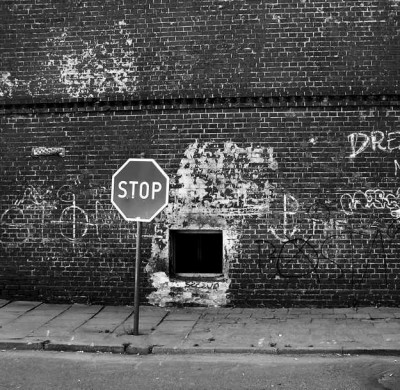
Over time, the activity of cycling has developed certain connotations. In the early days, it was seen as a form of short distance transportation and later became a form of recreation. At some point, bicycles began to be associated with children and childhood. Young children would start their mobile adventures with tricycles and move up to more grown-up two wheelers. This was a way for children to play and travel through their neighborhoods.
During the latter part of the twentieth century, after a period of derision towards athletics, a fitness craze emerged. Adults began looking for ways to exercise, and cycling started to make a comeback.
From this change in culture came a renewed interest in bicycles as transportation. At the time, cars were an entrenched part of American life, making bicycles appear to be intruders. With cars at the core of society, there was less emphasis on conservation; gas prices and pollution weren’t as much of a concern as they became subsequently. So people used cars for trips as short as a drive across the street.
Such use of cars was associated with economic success. Being able to afford to maintain and drive a car everywhere was a sign of having made it to the middle class.
In America, where most people aspire to upward mobility, status symbols, such as cars were representative of one’s place in society. Luxury cars were an extension of this view and exuded external signs of financial position.
In this milieu, bicycles came to be seen as a mode of transportation for those who were less well off. Many people assumed that cyclists were riding bikes because they could not afford cars. Therefore, riding bicycles for transportation became associated with a lower class of people.
Cyclists, unlike drivers, had to exert effort to transport themselves from one location to another. The sweat and strain was diametrically opposed to the effortlessness associated with motor vehicles.
On some level, the relative price of the vehicles, and degree of effort involved in operating them, added a class element to the struggle between drivers and cyclists.
Today, many drivers see themselves as members of the upper echelons of society. Perched in prestigious vehicles, they look down on small, nearly naked cyclists as vermin on the road. This mentality is akin to the mindset born by some when passing a housing project where less fortunate individuals are forced to live out of necessity. The well-off person tends to look down on people who find themselves in predicaments like poverty.
In such scenarios, it’s not uncommon to blame the less fortunate for their own problems. When you’re well-off, and not facing a long ascent out of poverty, it’s easy to be judgmental. For those looking from the bottom up, the weight of recrimination is an added burden.
So it is with drivers and cyclists. Drivers look upon cyclists as a demented, misguided, subaltern class of people who exist at the bottom of the heap. Drivers think that cyclists should give up their childish, low class ways and ascend to the motorist class which has “made it” in society.
A touch of snobbishness can be seen when drivers speak scoffingly about scofflaw cyclists, painting all cyclists with a broad brush as a lesser group. Similar sentiments waft through the air when drivers blast horns at bicyclists who are in their way. The sound rings out like a loud, obnoxious wail of superiority, as the driver asserts his class privilege and demands deference.
What ensues is a typical class struggle, with the cycling under-class fighting for recognition, fairness, and an equal chance to fully participate in society. And, the motorist “upper class” (by their own definition) fights to maintain its edge, its advantage.
All of this is nothing more than a war of perceptions. Transportation choices know no class. Better-off people choose to ride bicycles for personal reasons including exercise, environmental concerns and convenience. Poorer people use bicycles to save money by avoiding the expenses associated with owning and operating a car. People whose finances fall in between ride bicycles for a variety of reasons, but generally not due to economic hardship.
Still, it’s difficult to obliterate the notion of bicycles as transportation for the poor. Years of marketing cars as opulent items has tainted views of other vehicles. Cars, with all their bells and whistles, give the impression of making the traveler fully equipped. Bicycles, with their skeletal form, give the impression of denuded machinery.
Among the challenges of integrating bicycles into our roadways is the need to dispel class associations for cars and bicycles. Until bicycles are disassociated with the idea of poverty and a lower, less valuable class, they will never obtain the same level of respect as cars have enjoyed for decades.



